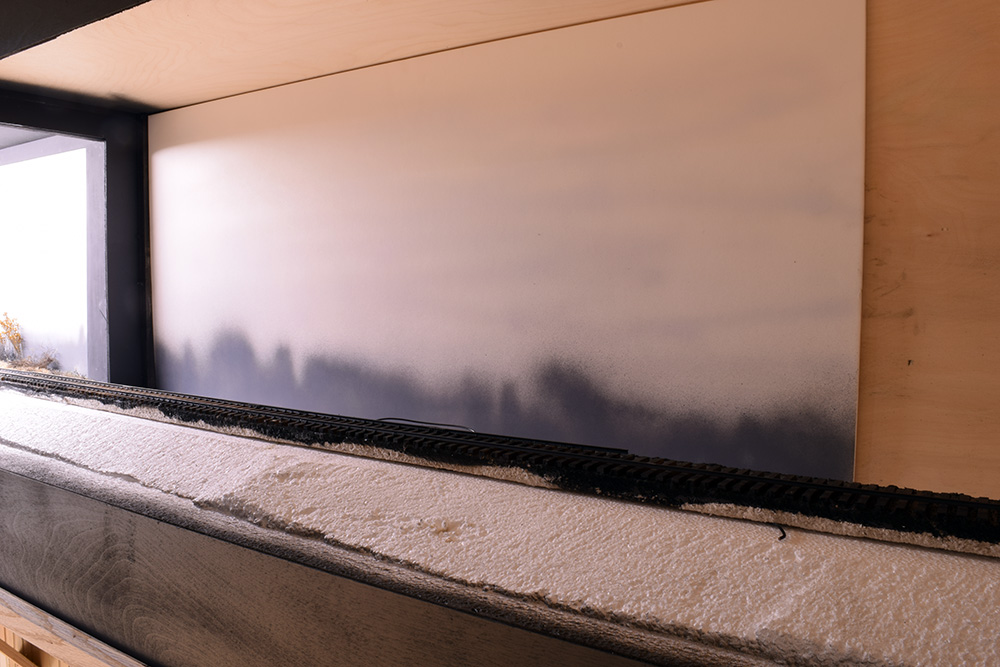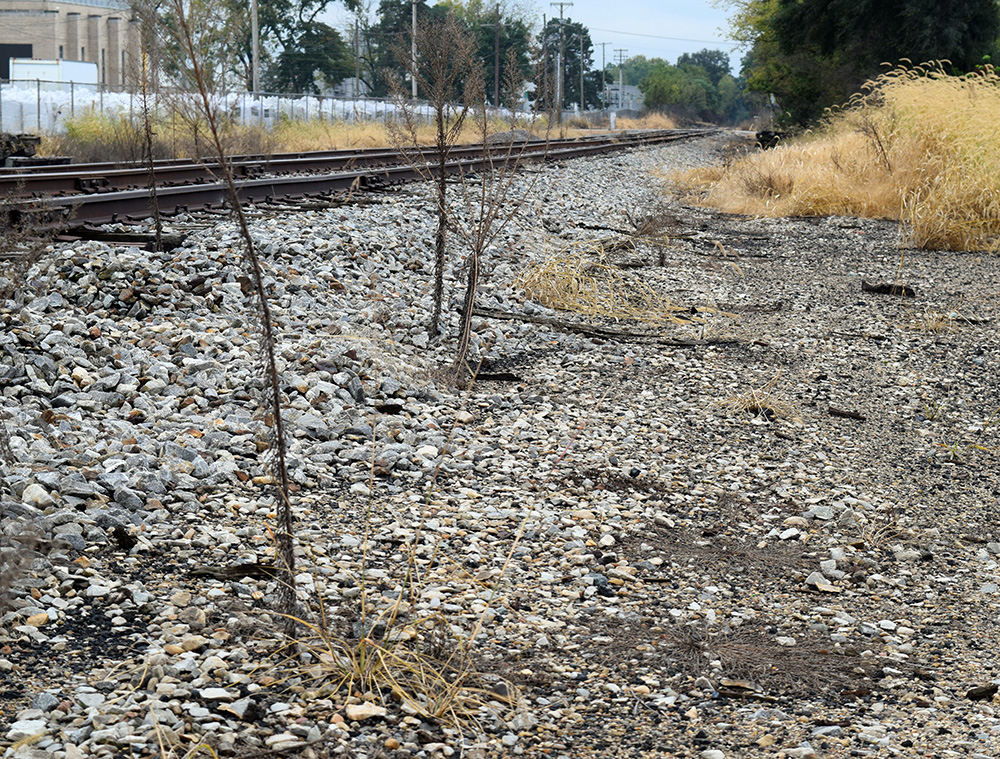Modeling Fills
The new track on Mill Road represents an abandoned through line. There is enough track to switch an important customer, but beyond that nature is taking over again. Like the original scene, we’re still in open country and the track is raised above the floodplain on a low fill. Al cluster of mature trees serve as screening at the joint of the modules and at a seam in the backdrop panels. The ancient fill that dates back to the late 1800s is overgrown with grasses and woody vegetation.
In shaping the fill, I made certain the slopes on each side were nice and gentle. Railroad engineering practice suggested the dimensions and slope angles but I treated these as guides rather than hard rules. An older earthwork like this would be softened by time and show a history of maintenance and various materials. I’m fortunate to have many nearby examples of low fills that I can study at length. Like many of you, I thoroughly enjoy this kind of homework.
In modeling an older right-of-way I consider engineering specs as guides rather than hard rules.

I made certain to give this fill a nice gentle slope to reflect its age and lack of maintenance. A cluster of mature trees will hide the dark post like framing near the section joint and the seams of the foam core backdrop panels.

This track is one of the inspirations for the new module. While not on a fill as such, notice the variation in the land contours surrounding the track. This area is anything but flat.
We go to great lengths to detail track, rolling stock and buildings, yet often treat scenery as nothing more filler. Little thought is given to the profiles of cuts and fills. The ground on many layouts is flat as a pool table thanks to the sheet goods underneath. It’s quick and easy to do scenery this way but even ground that looks flat will have natural contours or be artificially pitched for drainage purposes. I’m always amazed at the difference in realism these elements add to a scene.
In a painting, you emphasize certain elements but you want a cohesive look to the entire work. Modeling scenery more accurately is a way to bring the values of P48 that I enjoy into the entire scene. I think of this as giving a gift to viewers who appreciate such things.
Mike
Old habits eh? As a population we’re familiar with blueprints from the historical society that allow us to “know” the size and shape of even the most minute detail on every piece of rolling stock. Likewise, that same font yields equal data guiding us with an embrace of know points that each make the on layout experience “more realistic”. Challenged we can argue with the support of our peers just how right we are and do so with incredibly precise minutia in our models.
And then we get to the ground and “organic”. Where our friends backed us up on the count of rivets on that tender we’re not so sure that the tree should have been as well developed or when they regraded the second main. We were an army faced with rivet counts but isolated into individuality when we were faced with the trees and the forest.
We could do the obvious and just look outside as critically as we would study a picture of a hopper car to count the number of panels on the car side to return the same measure of limbs on a tree–we’d just need to get used to doing that. It is however uncharted territory for the modeller. Further, there’s something unsaid in the hobby which is among its most attractive qualities: that sense of community, of belonging, that comfort when we all agree on the right thing. While a manmade thing like a freight car or joint bar is largely unchanged through its decades long life the land is constantly changing. Modelling the land as it is, is also a decision to establish an approach to model it but this decision moves us away from the core of our community because how I determine how I’m going to tackle scenery is not how you will given how we each react to the finite data we can collect.
That said, those same libraries like our historical societies include profiles for track roadbeds, guides for drainage, and so on. It’s data available and ready to be engaged with. As the quality of our readymade items increases this should free time to invest in those areas where we are still invited to build from scratch. We have the right buildings and trains so have all the time to get the scene itself “right”.
Chris
my rambling, in two parts
Back when you suggested and displayed how incredible scenery can look when we start piling on layers of colour and texture you really changed everything about how I thought about doing it. Then I tried it and there’s no going back. That sense of depth and richness you can build up by layering in texture over texture is unmatched.
Looking at the fill in your photos I can’t help but think this is another case where building layers of gravel, dirt, and grass will be so powerful to help you represent this on your model. At the time, equipment makes a fill or ballast profile a relative constant but soon after the negotiation of form against environment alters that constant shape, tempering it each time the wind breathes or the rain explores. Similarly, I see only exciting opportunities to build up this scene on the model too. From foundational layers of media through the tailoring explored as the shape is refined and discovered.
I can’t wait to see how this comes along.